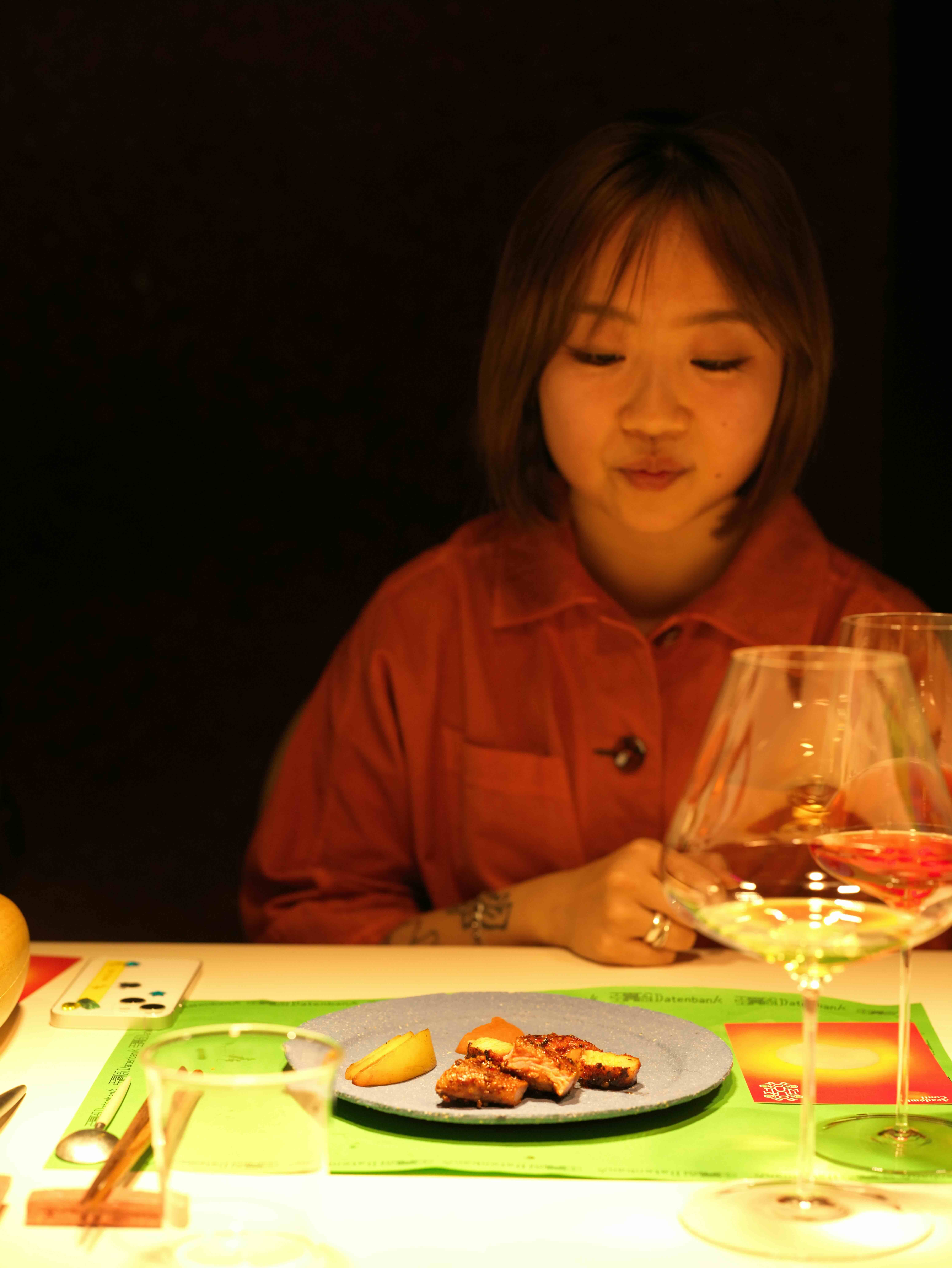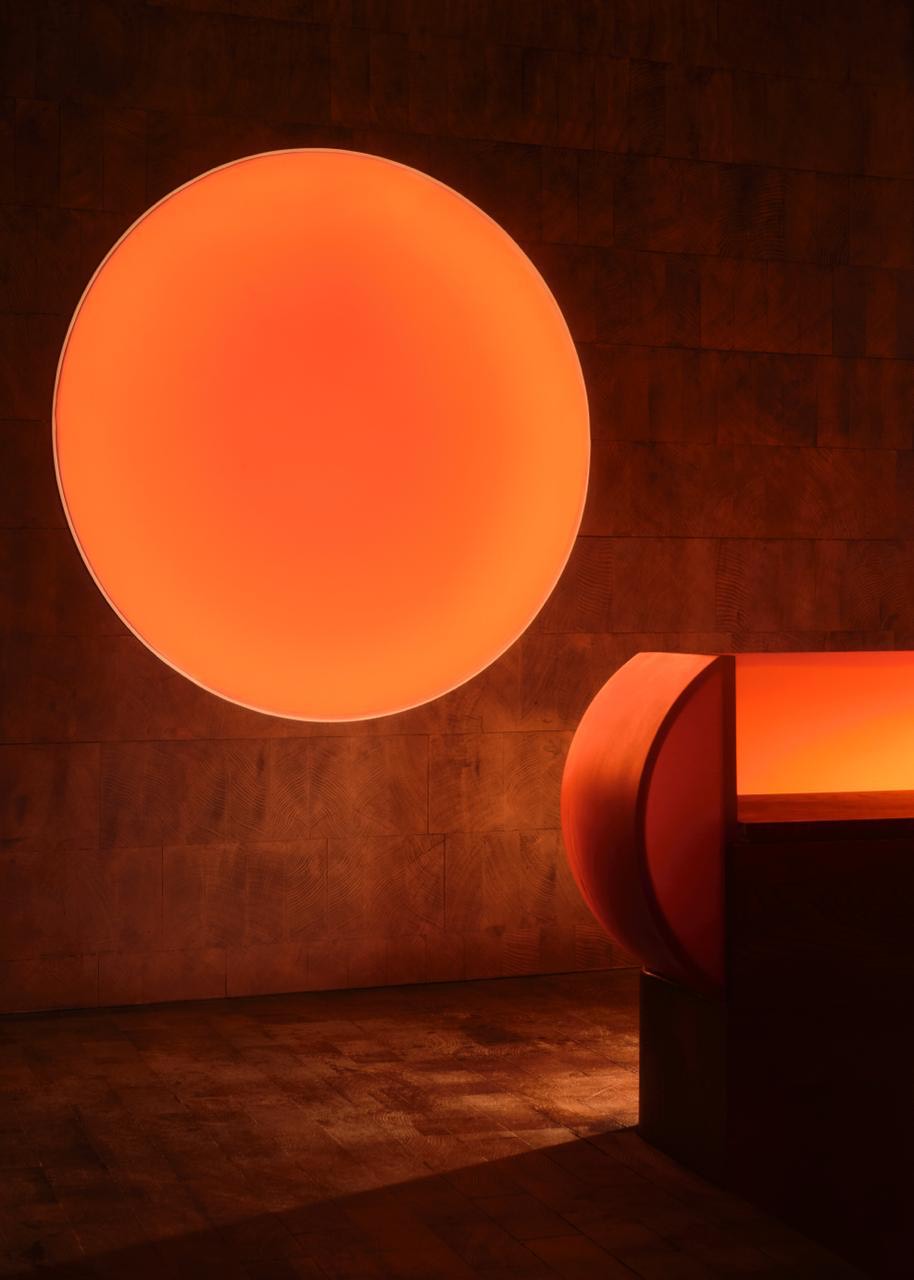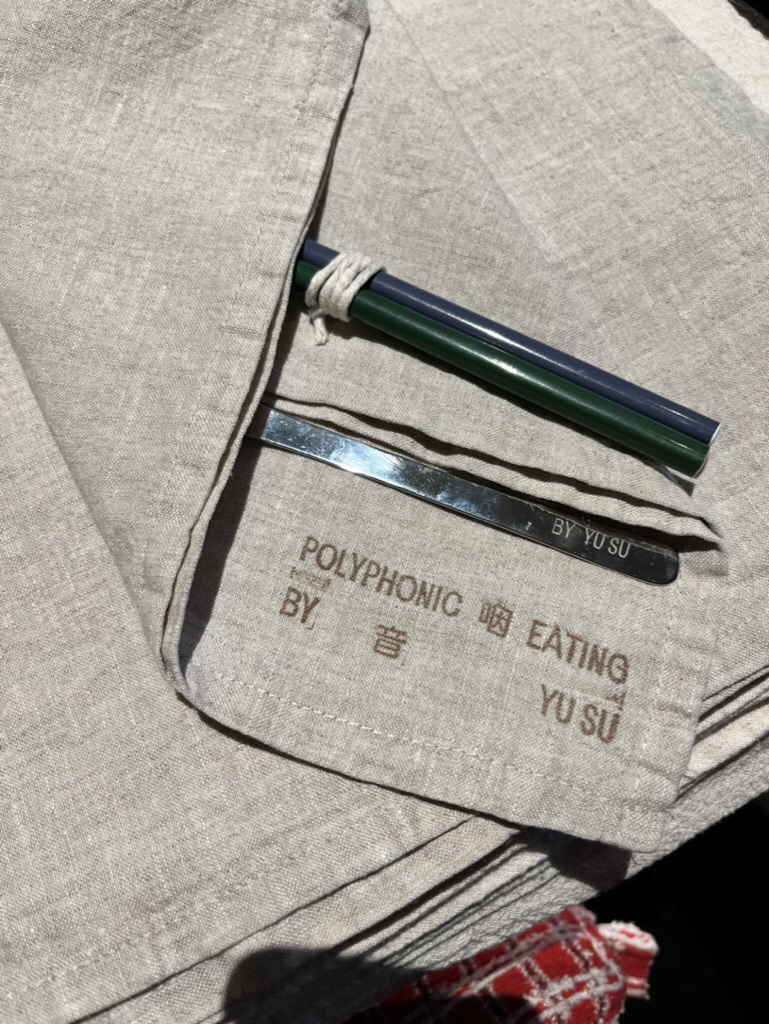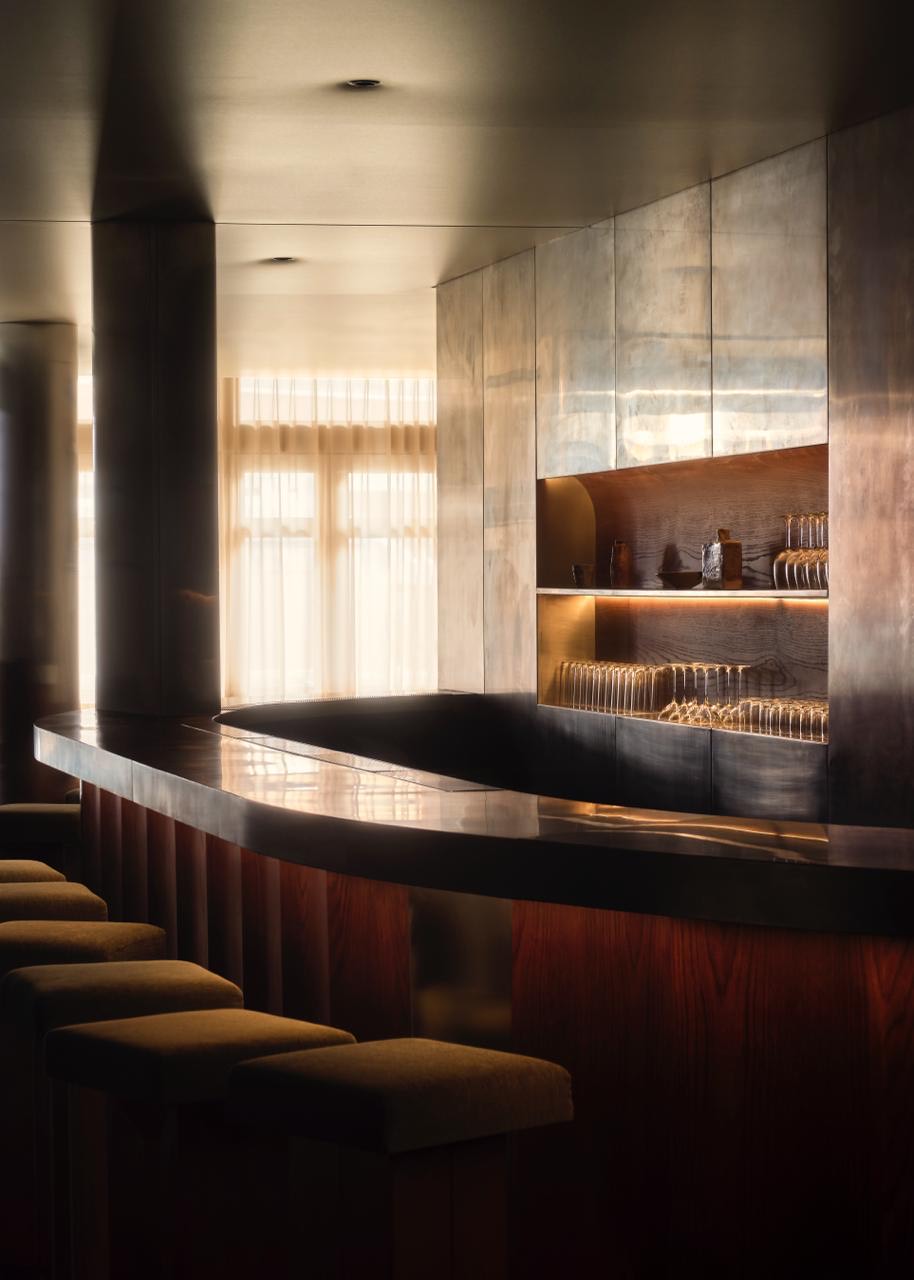Through ‘Polyphonic Eating’ DJ Yu Su Wants You to Listen Closer, Taste More, and Feel Deeper
By Joel HartWhen music producer and DJ Yu Su was a child in Kaifeng, China, her grandfather, a dental professor with a passion for cooking, would prepare a different breakfast for her every morning. He served hand-pulled noodles, baozi, and other wheat-based dishes made with produce from his garden, including edible flowers. More unusually for a family in Kaifeng, dishes like injera and doro wat appeared, influenced by her uncle and aunt’s decade spent living in Ethiopa.
Decades later, Yu Su’s career in music had blossomed, but she found herself with an itch she needed to scratch. So in December 2022, she began hosting supper clubs alongside her DJ performances, cooking up dinners in Tokyo, Shanghai, Dublin and other major world cities. While DJ ownership of restaurants is long-established and increasingly common, a foray into cooking events themselves is a relatively new phenomenon. The major example comes from DJ Tennis, who established Munchietown at the end of 2023, which acts as a cooking content page, and a nomadic pop-up platform that has meant kitchen takeovers in San Francisco, London, Ibiza and LA.
In both cases, food has been the central focus of the experience, with the trend of seeing music and food as interactive, reemerging in parallel. Whilst creative agency Bombas & Parr were experimenting with the idea of audio-gustatory interaction over a decade ago, it wasn’t until 2022, that London restaurant and wine bar Carousel and creative agency AVA established Paired, with the most recent event at the Tate Modern with Giles Peterson playing tracks alongside the cooking of Japanese chef Yoji Tokuyoshi.

Yu Su enjoyed her experiences cooking at pop-ups, but there was something uneasy ticking in her brain. At a collaborative event in February at Alimentaria Mexicana in Vancouver, she served up a ceviche dish, which she called ‘ceviche half moons floating in a pink lake,’ an indication of a new perspective she wanted to bring to the conventional supper club.
She arrived at a concept she calls ‘polyphonic eating’, with the aim to “push to the other side of what conventional going out to eat experience is like in modern societies,” she told me over the phone. Polyphonic music involves multiple sounds or voices, but it wasn’t immediately clear to me what the concept might mean when applied to the act of eating. “It’s more like a performance,” she continued. “I wouldn’t call it a supper club.” She also pointed me towards Pauline Oliveros’ concept of deep listening, which she took inspiration from, that calls for active listening to achieve greater connection with the space and bodies around you. The closest reference point I had was my experience of a collaborative dinner between pioneering Mumbai-based chef Vanika Choudhary and Korean chef and buddhist nun Jeong Kwan, which opened with Kwan inviting diners to partake in the values of Korean temple food, seeing the meal as nourishment for the mind as well as the body, and a way of connecting to nature. Like that dinner, I’d expected a radical attentiveness would be required, and that this would have to be directed towards the music and the food. Where the polyphony came into it was still something of a mystery.
I went to the inaugural event at London’s newest listening bar Space Talk, in Farringdon in September. The venue is a feast for the eyes and ears. The sound-system is crystalline and the curvaceous Bauhausian shape of the room and its earthy, warm tones embrace you immediately. Yu Su told me that with its colour palette of terracotta and forest green, the space really reminds her of 1980s China, and that choosing it was a no-brainer. At this point, I knew there would be a set menu and a soundtrack, and that I should come with the intention of mindful engagement with both of them.
A white cloth was placed behind the DJ booth. It had an indiscernible black vessel with an eye in its middle. The roughly twelve guests were invited to sit around a table, hand in our phones, and commit to silence when the meal officially began. The menu started with a mezcal, beetroot and puer tea drink, which she later described to me as a ritualistic offering, tying back to the symbolic importance of tea in Chinese dining culture, with the beverage playing a vital role in social customs and traditions, representing health, bonding, hospitality and mindfulness. I was now under the impression that the soundtrack was meant to be entirely synergistic with the food, a belief seemingly vindicated by the repetitive ploppy sound that manifested with the soothing roundness of the drink.
As the soundtrack began, and the courses began coming out, I started to question whether there was an intended synergy. Was it meant to invoke subjective responses to the multi-sensory world each of us had entered? Were each one of us noticing different melodic patterns as the sound-waves hit our ears and the foodstuff hit our palates?

In our interview after the dinner, Yu Su confirmed that the meal’s experience was meant to be continuous rather than segmented by individual dishes or sounds. It wasn’t about creating a specific sound to change how you experience a dish but about maintaining a flow throughout the meal. “Listening is maybe the most sensitive sense, directional-wise,” she said. The aim is to realise that “the senses are being triggered at the same time. And they all influence each other.” This includes the smells, colours, lighting and tension in the space. “They all influence how you taste.”
Attuning my ears to the soundtrack alone had allowed my palate a kind of freedom I’ve rarely known. The first dish, a dish of pomodorino and salted plum, is a staple at all her pop-ups. Here it was served with a cucumber granita and a glass of chilled tomato consommé with lime leaf oil alongside. I don’t know if it was the dish itself or the fact that it was effectively the first time my palate had experienced this level of focus, but I have never felt the umami quality of tomato so intensely and purely. In our conversation afterwards, I suggested this may have been down to this level of intention. “We don’t get to have intention,” she responded. “It’s not that we don’t want to. We just don’t really get to most of the time.”
The meal progressed through different colours, textures and moods, contrasting like yin and yang to reflect the Taoist influences in her general art practice, which seeks to capture the interconnectedness of all things. Next came a gothic dish of pine flower century egg with Yunnan tiger skin pounded chilis and fennel, followed by a much softer, oceanic dish of raw scallop with smoked crab roe, shallots, oolong-infused peanuts and lucky clover. This was followed by an earthier rice course – flavoured with chalky dried anchovy, ginger, nori and chai poh (preserved sweet radish) – and topped with a soy-cured yolk and daikon simmered in a dashi broth. I felt like I understood the precise flavour of daikon more after eating the dish – slightly sweet, and umami from the dashi, but mostly a pleasing bitterness – and the way the almost neon reddy-orange egg yolk oozed onto the rice as I cut it open, it’s softness and colour seemed to meld into the room and my dish. A bright, cold dish of soy milk with youtiao (fried doughnut sticks with) followed, with the meal ending on a hot liquor of fermented glutinous rice wine with poached peach and snow fungus inside.

The trick was “to see the entire seven courses as one big dish,” and a “full complete story from beginning to the end,” Yu Su told me later, with the meal flowing like a journey from cold to hot, moving from the surface down deeper into the earth. It starts with ice, moves through cold, room temperature, warm, and ends on an unconventional hot note. This progression is intentional, which is also why drink orders were not permitted during the dinner. It’s a single, planned experience.
But what of the soundtrack? What was its role in the eating experience? “The music follows that as well,” she added. She described the narrative sensory journey of the meal as mirrored by the music, which isn’t about capturing specific moments but rather about the journey through time and space as they morph together.
It began with transportation into the kind of rural China I’d seen in Jia Zhang-ke films, and continued with lighter, airy sounds that floated above, and gradually descended, just as the meal moved from cold to hot. The deeper you go, the more the sub-bass emerges toward the end, creating a sense of grounding. The final part of the soundtrack is soothing, as if you’ve dug deep into the earth and reached a balanced, harmonious point at its core.
If this is sounding a little serious, she had an important qualification. “At the same time I also wanted to, in my words, fuck with people’s head a bit.” She was amused watching people’s different reactions to the imposed silence, and intrigued by how people were sneakily watching each other. “Theatrical is a good word to describe it,” she said. “It’s theatre.” It seemed to me that she derives pleasure as the director in this theatrical production: watching the audience react in different ways, seeing how her artistic vision is interpreted, the plurality of human responses in what is essentially a controlled sensory experiment.

We all left with some homework. A card entitled ‘HOMEWORK: identify your feelings.’ It had words and phrases on it, which were connected to different shapes with distinctive colour patterns. “My favourite is butter creamed with sugar,” she told us. She later explained that “they’re still very related to the dishes in weird, indirect ways. The really abstract ones are for the imagination” but “all of them are very comforting.” I’m still not sure what her ‘favourite’ actually meant, but there was also: tender gaze; shimmer; do I?; and fairlight, all of which resonated with different moments I’d experienced throughout the meal.
Overall, the event felt like an extreme version of what we could all do with more of, at least sometimes. Tuning in and really focusing on taste. She has plans for future polyphonic eating events in London, where she now resides, with the aim to work collaboratively with other chefs. “I want to work with other chefs because I want their creative input as well,” she remarked. “It would totally be like playing music.” That doesn’t just apply to the chefs, though. “Because it’s polyphonic eating,” she added, “so you all have to play the instrument.”
Joel Hart is a London-based writer, anthropologist and culture journalist mainly focusing on food, restaurants, and artisanal drinks. Header image by Xie Fan: Yu Su at Datenbank, Chengdu.
Note: There is a no photography policy at the polyphonic eating events, hence this piece is illustrated with images from an alternative venue.